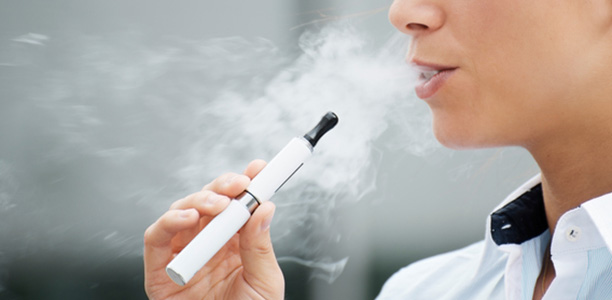Nonsmoking adolescents who use e-cigarettes, smokeless tobacco or tobacco water pipes are more likely to start smoking conventional cigarettes within a year, according to new research by UC San Francisco.
The study analyzed data from a nationally-representative sample of more than 10,000 adolescents, ages 12 to 17. It is the largest study to date to estimate the impact between alternative tobacco use and the subsequent start of conventional cigarette smoking in youth.
Any form of tobacco, including e-cigarettes, was associated with future smoking, the authors reported, especially when adolescents used more than one product. As a result, novel tobacco products have the potential to undermine public health gains in combatting smoking, the researchers said.
The study will be published at 11 a.m. ET on Jan. 2, 2018, in JAMA Pediatrics.
“We found that teens who experimented with tobacco in any form were at greater risk of future smoking,” said senior author Benjamin W. Chaffee, DDS, PhD, an assistant professor at the UCSF School of Dentistry.
“In the last few years, research has focused on the potential of e-cigarettes to engage never-smoking adolescents in tobacco use,” Chaffee said. “Our findings confirm that the use of the full range of tobacco products, including e-cigarettes, cigars, tobacco water pipes, and smokeless tobacco, is associated with greater odds of future cigarette smoking.”
Approximately 90 percent of adult smokers smoked their first cigarette by the time they were 18. Earlier studies have shown that smoking a single cigarette per month during adolescence is tied to daily smoking during adulthood.
In recent years, non-cigarette tobacco products have become increasingly popular among youth, especially e-cigarettes, the most common form of tobacco used by youth. In 2016, nearly 4 million middle and high school students used at least one tobacco product, and 1.8 million of the students reported using two or more products, studies have shown.
The new UCSF study was based on some 10,384 respondents in the Population Assessment of Tobacco and Health (PATH) study, who said they’d never tried a cigarette. The PATH Study is a collaboration between the FDA and the National Institutes of Health. Never-smoking youth were first interviewed from September 2013 to December 2014.
Questionnaires looked at eight types of combustible and noncombustible tobacco and nicotine products: bidis, cigarettes, cigars (traditional, filtered, and cigarillos), e-cigarettes, hookah (tobacco water pipes), kreteks, pipes, and smokeless tobacco (chewing tobacco, dissolvable tobacco, moist snuff, and snus). All youth participants had parental consent.
“This finding is particularly important because products like cigarillos and smokeless tobacco are often used by young people of vulnerable populations. A focus solely on e-cigarettes ignores health risks for those youth,” said first author Shannon Lea Watkins, PhD, a postdoctoral fellow at the UCSF Center for Tobacco Control Research and Education.
The mean age for adolescents participating in the study was 14.3 years. The estimated effects of non-cigarette tobacco products on subsequent cigarette smoking were adjusted for sociodemographic, environmental and behavioural smoking risk factors.
A year later, 469 adolescents (4.6 percent) said they’d tried a cigarette; and 219 (2.1 percent) had smoked a cigarette within the past 30 days. Smoking was higher among adolescents who used e-cigarettes (19.1 percent); hookah (18.3 percent); non-cigarette combustible tobacco (19.2 percent); or smokeless tobacco (18.8 percent).
After adjusting for smoking risk factors, the odds of smoking the previous month were approximately twice as high among e-cigarette users and more than three times as high for those who used multiple products, an increasingly common use pattern in adolescents.
Various factors could explain the findings, the authors said: Using non-cigarette tobacco products might induce nicotine dependence; adolescents might find that such products are more convenient and effective in satisfying nicotine cravings, and use of the products could change how adolescents perceive cigarettes.
The authors note that even if young people don’t progress to smoking cigarettes, “any tobacco use is harmful.” They suggest that policies such as restricting flavours in e-cigarettes and raising the age of tobacco purchasing could divert youth from becoming smokers. They also said that the paper provides support for legislation to ban flavoured tobacco products on the grounds that flavours are used to attract youth to the non-cigarette tobacco products studied here. In San Francisco, a measure seeking to repeal the ban is heading to voters this year.
“San Francisco and Oakland have both acted to ban the sale of flavoured tobacco,” Watkins said. “These are measures that the tobacco industry is attempting to overturn. Any policy designed to keep kids from smoking needs to account for alternative products. Our findings suggest that flavour restrictions, raising the minimum purchase age to 21, and higher excise taxes on non-cigarette products not only make these non-cigarette products less appealing to youth but have the benefit of fewer kids being led to cigarette smoking as well.”
(Source: UCSF, JAMA Pediatrics)










